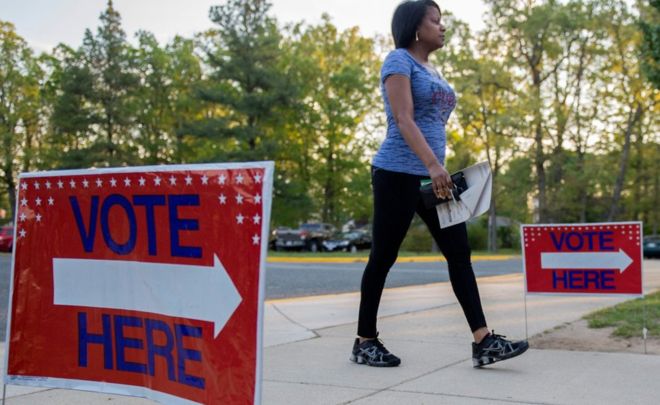
The Democratic Governors Association (DGA) on Tuesday summoned its polling, analytics and media consultants in downtown Washington to unveil a model designed to give the party better intelligence about where, and whomto target in the closing days of an election, Politico writes.

The goal is to boost campaigns’ understanding of undecided voters and to identify which voters might switch from one party to the other at the ballot box.
The party has been stepping up efforts to overhaul polling operations following now-President Donald Trump’s unexpected victory last fall.
There’s a sense of urgency attached to the project: The thirty eight governorships up in 2017 and 2018 may represent the party’s best shot at returning to power before the 2020 presidential election, Politico comments.
“This kind of redefines, at some level, undecided voters and the difference between an undecided and a persuadable voter. Just because someone says they’re undecided in a poll doesn’t mean they’re persuadable,” said DGA Political Director Corey Platt.
“And just because someone says they’re with you doesn’t mean they’re not persuadable. And so this is a better tactical tool to help identify who the people are that we need to persuade at the end”, he added.
Republicans now control 33 of the nation’s 50 governorships, the most since 1922, in large part because Republican underdogs managed to grind out victories over the past four cycles against Democratic favorites in a number of states, despite polling that led Democrats to believe they were headed to victory. Kansas Governor Sam Brownback, Maryland Governor Larry Hogan and Maine Governor Paul LePage are among those who trailed in many of the polls before the 2014 election, but ultimately won.
Last year, Democrats fell short in Indiana and Missouri, even though their pre-election surveys suggested each race was winnable. Exit poll data indicates late-deciding voters broke sharply for Trump over Hillary Clinton in the three northern states that provided Trump with his Electoral College majority: Michigan, Pennsylvania and Wisconsin, Politico notes.
Democratic pollster Jefrey Pollock, President of Global Strategy Group in New York, led a project to re-contact voters in Indiana and Missouri, along with two states where Democrats won the governor’s race, Montana and West Virginia, to figure out what happened at the gubernatorial level in 2016.
According to the research, Republicans won undecided voters in Indiana and Missouri by margins that likely proved decisive in those close races.
New polling, demographic and commercial data will be used in order to identify the universe of truly persuadable voters — the specifics of which the DGA and Pollock say are proprietary.
“It’s not just the undecideds. It’s also that there’s a bunch of people who may very well switch. Seventy or 80 percent of voters aren’t switching. But that 20 percent — who are they?”, Pollock said.
For now, the DGA is hopeful that party operatives working on gubernatorial races will embrace this new model, though there’s no guarantee it will gain widespread acceptance. While the new approach helps identify persuadable voters, it doesn’t in and of itself solve Democrats’ most significant problem: From last year’s presidential race back to the 2014 midterms, more late-breaking elections broke toward Republicans.

Be the first to comment